SpringBoot 学集 (第四章)Web开发
2021-03-30 12:29
YPE html>
标签:expr his eric mon ids odi attr bash boolean
写在前面:分享技术,共同进步,有不足请见谅,相关意见可评论告知 ~
编程路漫漫,学习无止尽!
- Web开发
- 静态资源的映射规则;
- 外部资源访问
- 内部资源访问
- 模板引擎
- 引入thymeleaf;
- Thymeleaf使用
- 语法规则
- 表达式
- SpringMVC自动配置
- 全面接管SpringMVC;
- 修改SpringBoot的默认配置
- 国际化
- 总结
- 同时编写可视化操作
- 静态资源的映射规则;
- 常见异常及其错误
- ①Thymeleaf版本错误
Web开发
静态资源的映射规则;
一、相关配置代码在ResourceProperties.java下
设置和静态资源有关的参数,缓存时间等
@ConfigurationProperties(prefix = "spring.resources", ignoreUnknownFields = false)
public class ResourceProperties implements ResourceLoaderAware {
}
二、相关配置代码在WebMvcAuotConfiguration.java下
有以下三大主要功能:
@Override
public void addResourceHandlers(ResourceHandlerRegistry registry) {
if (!this.resourceProperties.isAddMappings()) {
logger.debug("Default resource handling disabled");
return;
}
Integer cachePeriod = this.resourceProperties.getCachePeriod();
if (!registry.hasMappingForPattern("/webjars/**")) {
customizeResourceHandlerRegistration(
registry.addResourceHandler("/webjars/**")
.addResourceLocations(
"classpath:/META-INF/resources/webjars/")
.setCachePeriod(cachePeriod));
}
String staticPathPattern = this.mvcProperties.getStaticPathPattern();
//静态资源文件夹映射
if (!registry.hasMappingForPattern(staticPathPattern)) {
customizeResourceHandlerRegistration(
registry.addResourceHandler(staticPathPattern)
.addResourceLocations(
this.resourceProperties.getStaticLocations())
.setCachePeriod(cachePeriod));
}
}
外部资源访问
(1)所有 /webjars/** ,都去 classpath:/META-INF/resources/webjars/ 找资源
?webjars:以jar包的方式引入静态资源(类似于之前的WEB-INF)
官方文档参考
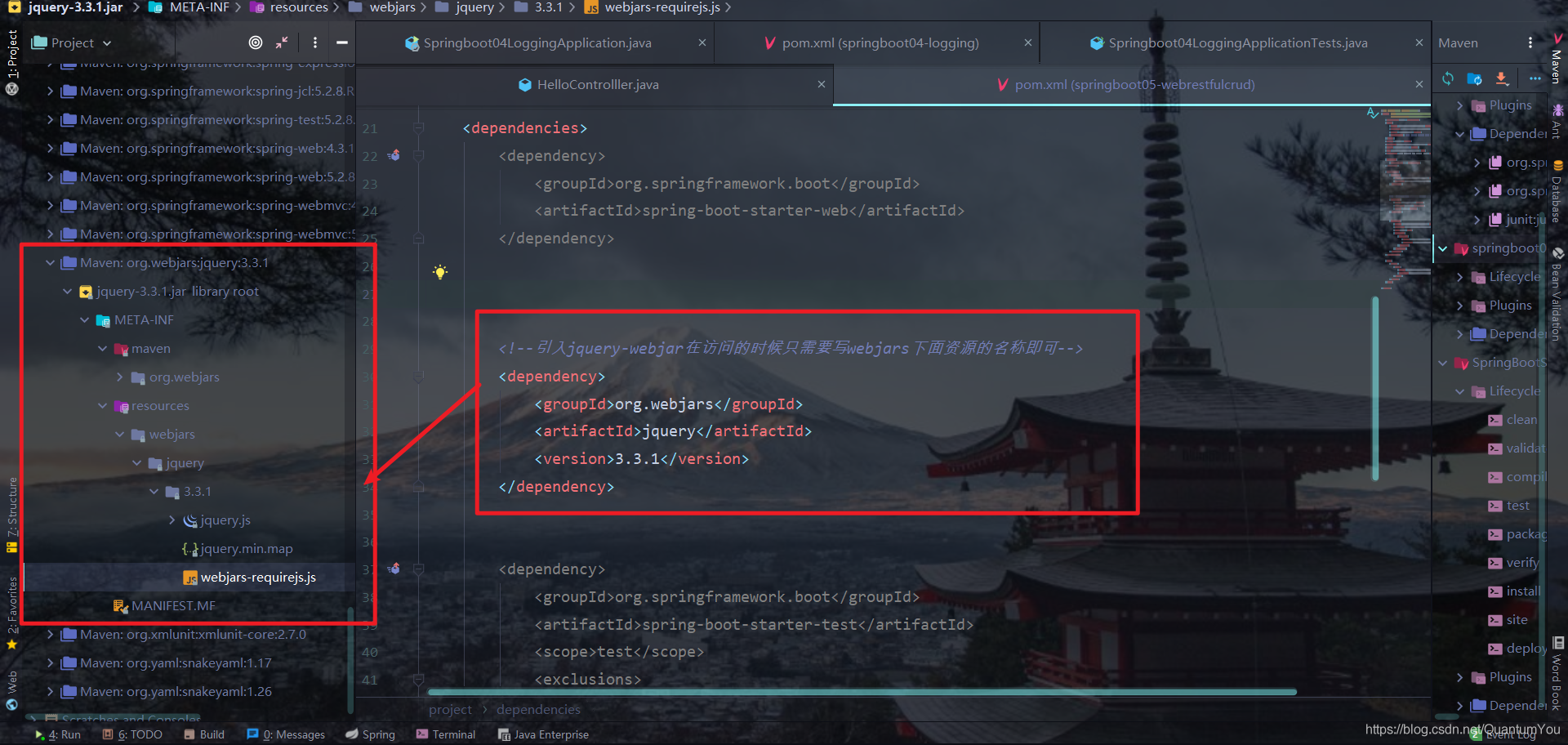
localhost:8080/webjars/jquery/3.3.1/jquery.js
访问结构如下:
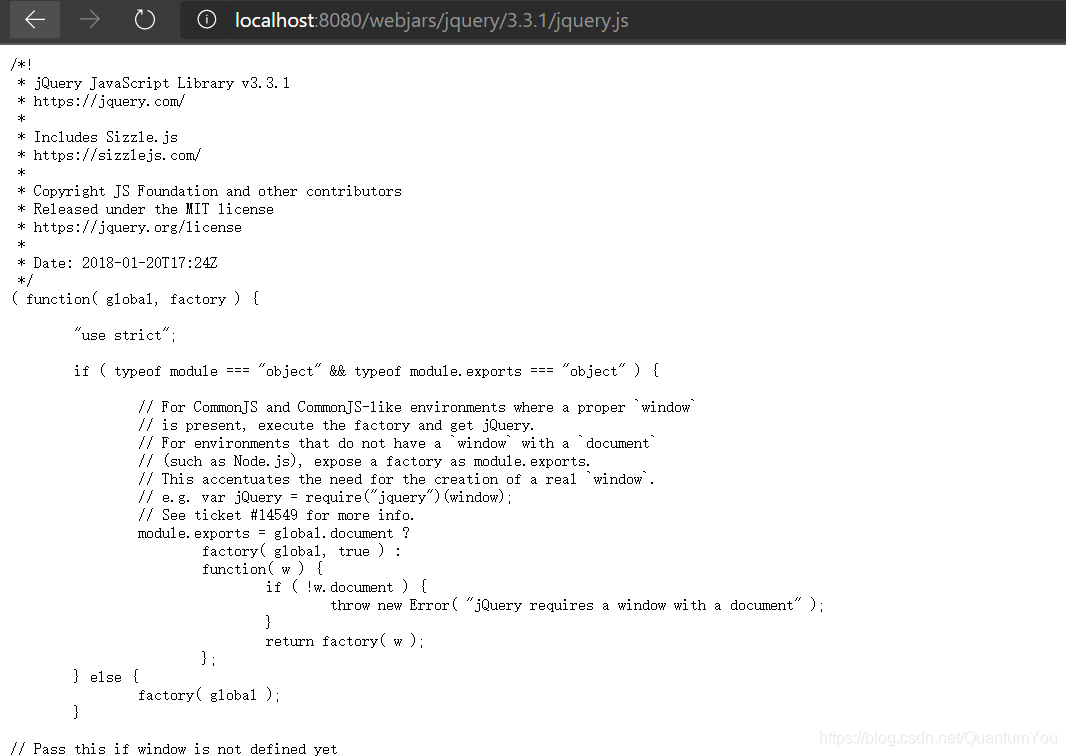
(2)配置欢迎页映射
@Bean
public WelcomePageHandlerMapping welcomePageHandlerMapping(
ResourceProperties resourceProperties) {
return new WelcomePageHandlerMapping(resourceProperties.getWelcomePage(),
this.mvcProperties.getStaticPathPattern());
}
欢迎页; 静态资源文件夹下的所有index.html页面;被"/**"映射;
localhost:8080/ 找index页面
(3)配置喜欢的图标
@Configuration
@ConditionalOnProperty(value = "spring.mvc.favicon.enabled", matchIfMissing = true)
public static class FaviconConfiguration {
private final ResourceProperties resourceProperties;
public FaviconConfiguration(ResourceProperties resourceProperties) {
this.resourceProperties = resourceProperties;
}
@Bean
public SimpleUrlHandlerMapping faviconHandlerMapping() {
SimpleUrlHandlerMapping mapping = new SimpleUrlHandlerMapping();
mapping.setOrder(Ordered.HIGHEST_PRECEDENCE + 1);
//所有 **/favicon.ico
mapping.setUrlMap(Collections.singletonMap("**/favicon.ico",
faviconRequestHandler()));
return mapping;
}
@Bean
public ResourceHttpRequestHandler faviconRequestHandler() {
ResourceHttpRequestHandler requestHandler = new ResourceHttpRequestHandler();
requestHandler
.setLocations(this.resourceProperties.getFaviconLocations());
return requestHandler;
}
}
所有的 **/favicon.ico 都是在静态资源文件下找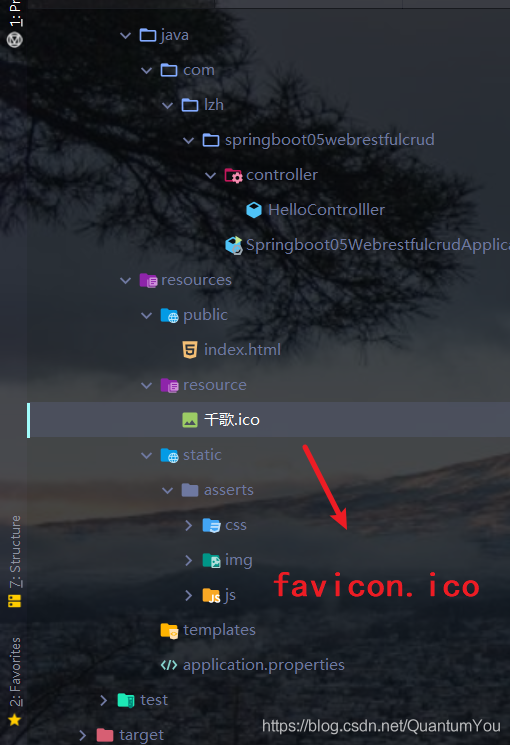
注意:应该统一命名规范(favicon.ico),如上图则加载不到
也有可能因为浏览器相异导致加载不到
内部资源访问
1、"/**" 访问当前项目的任何资源,都去(静态资源的文件夹)找映射
"classpath:/META-INF/resources/",
"classpath:/resources/",
"classpath:/static/",
"classpath:/public/"
"/":当前项目的根路径
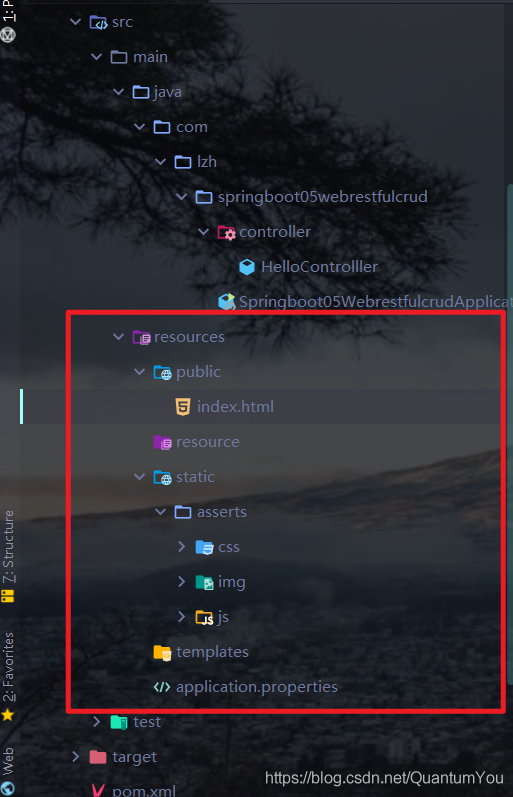
注意:可以在application.properties文件下修改默认配置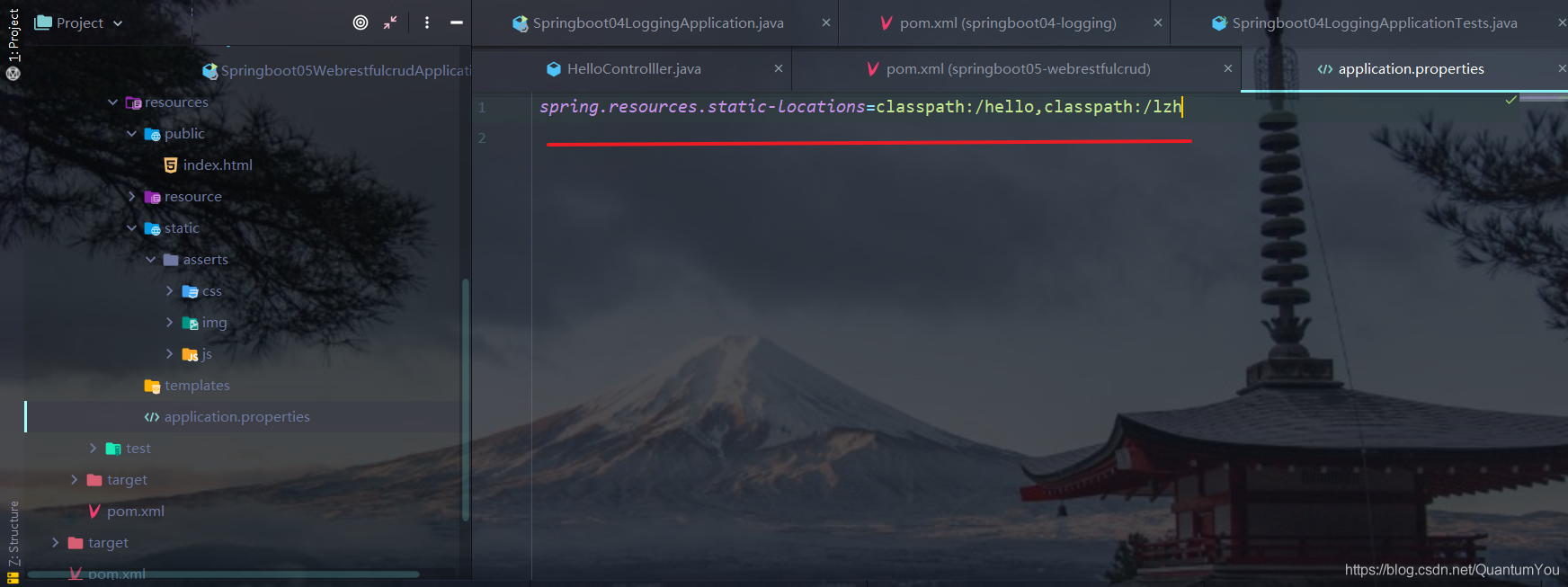
eg:
spring.resources.static-locations=classpath:/hello,classpath:/lzh
模板引擎
引入:因为SpringBoot 默认不支持jsp 而且tomcat 嵌入式植入
常见的模板引擎:JSP、Velocity、Freemarker、Thymeleaf(SpringBoot推荐)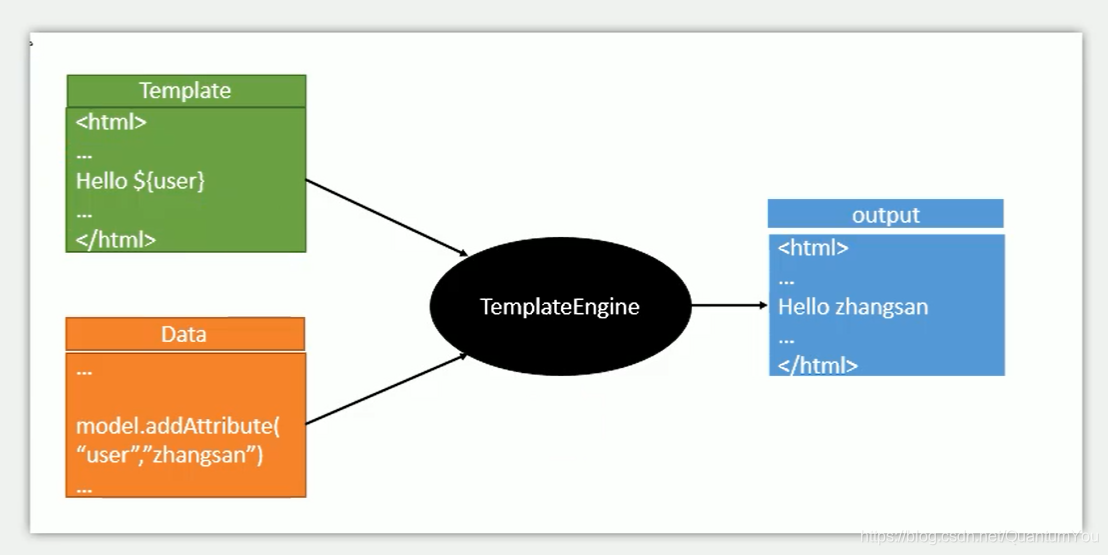
引入thymeleaf;
1、在pom.xml中引入依赖
org.springframework.boot
spring-boot-starter-thymeleaf
2、切换thymeleaf版本
3.0.9.RELEASE 2.2.2 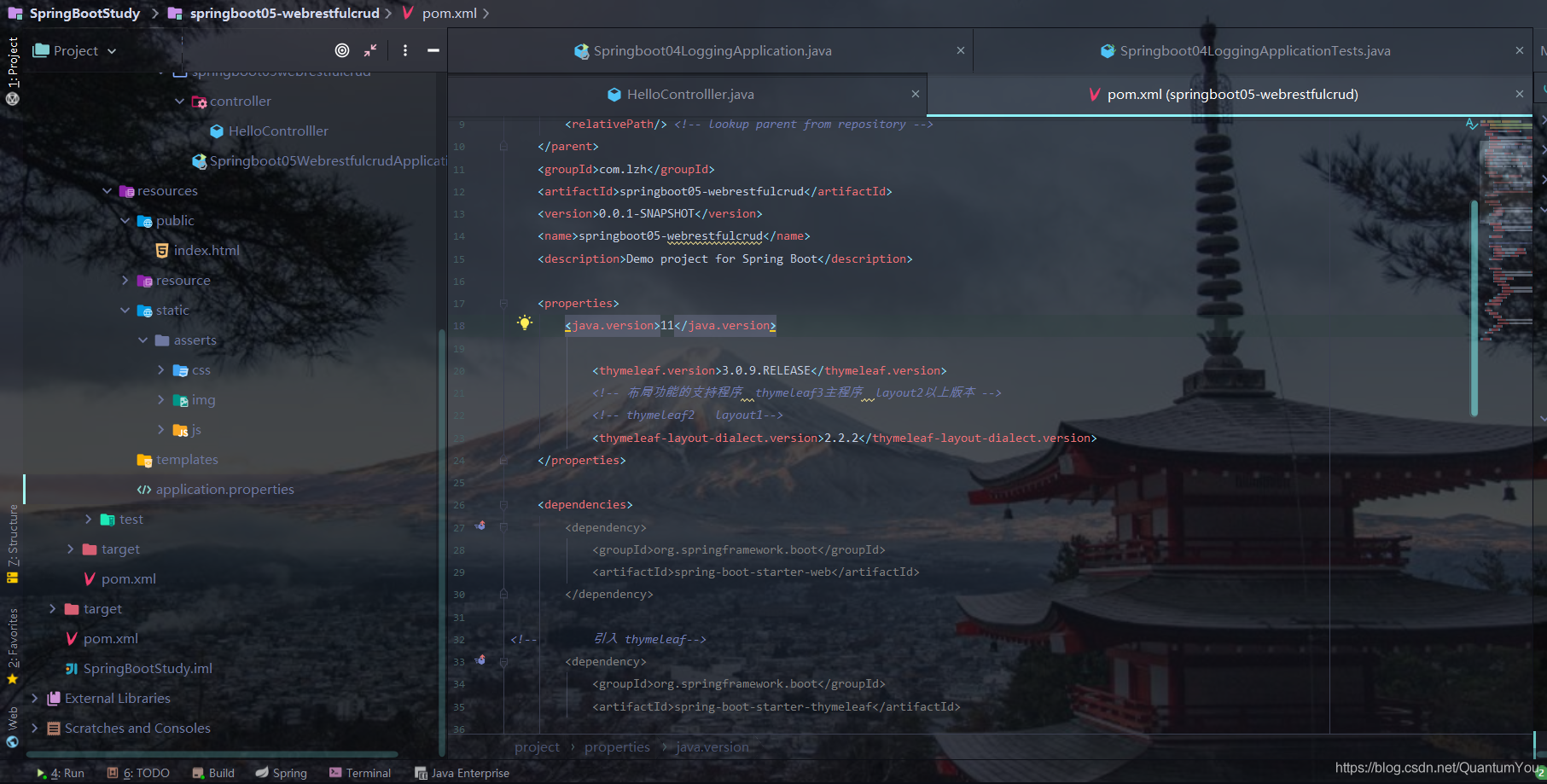
Thymeleaf使用
1、在ThymeleafProperties.java源码分析
@ConfigurationProperties(prefix = "spring.thymeleaf")
public class ThymeleafProperties {
private static final Charset DEFAULT_ENCODING = Charset.forName("UTF-8");
private static final MimeType DEFAULT_CONTENT_TYPE = MimeType.valueOf("text/html");
public static final String DEFAULT_PREFIX = "classpath:/templates/";
public static final String DEFAULT_SUFFIX = ".html";
//
将HTML页面放在classpath:/templates/,thymeleaf就能自动渲染;
使用:
1、导入thymeleaf的名称空间
2、使用thymeleaf语法;在rescource/templates 目录下编写
Title
成功!
这是显示欢迎信息
3、在HelloController.java中编写java核心代码
注意:
(1)没有方法上@ResponseBody
(2)是@Controller而不是@RestController
(3)加上@ResponseBody 不解析(SpringMVC内容)
语法规则
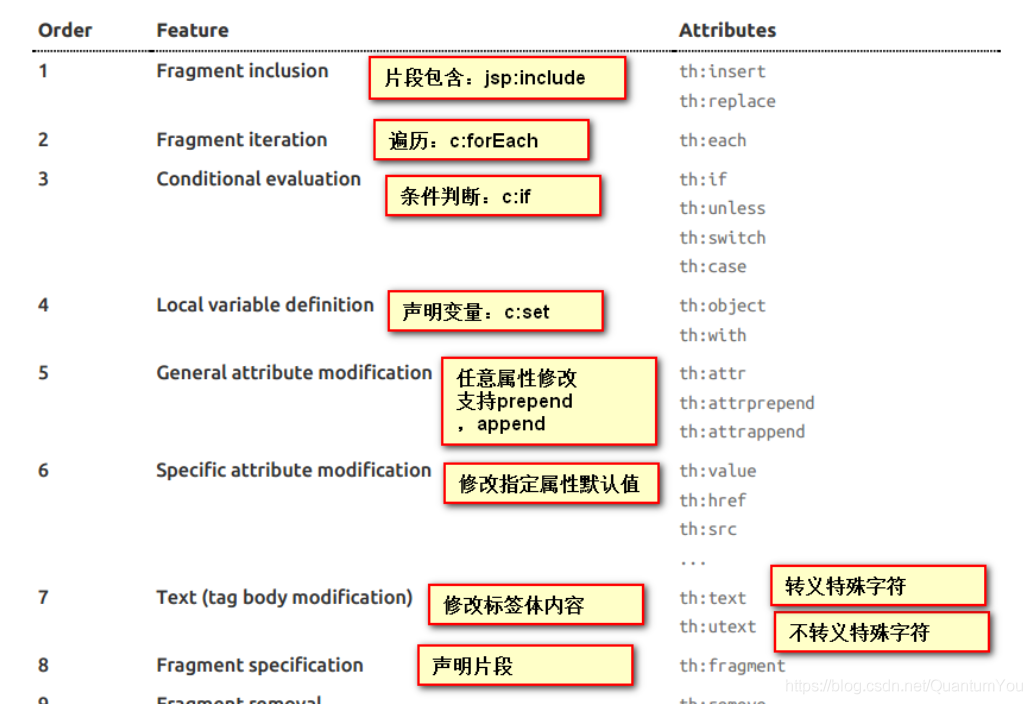
官方文档---> 第十章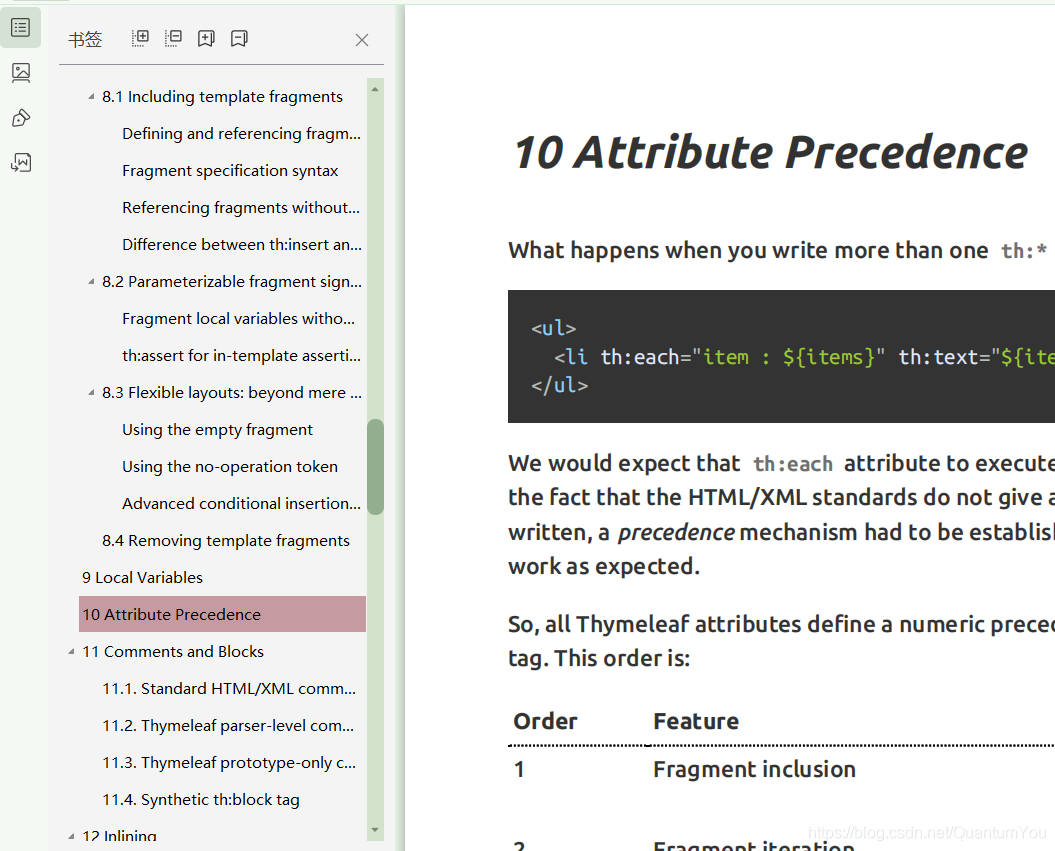
表达式
一、Simple expressions:(表达式语法)
Variable Expressions: ${...}:获取变量值;OGNL;
(1)获取对象的属性、调用方法
(2)使用内置的基本对象:
#ctx : the context object.
#vars: the context variables.
#locale : the context locale.
#request : (only in Web Contexts) the HttpServletRequest object.
#response : (only in Web Contexts) the HttpServletResponse object.
#session : (only in Web Contexts) the HttpSession object.
#servletContext : (only in Web Contexts) the ServletContext object.
${session.foo}
(3)内置的一些工具对象:
#execInfo : information about the template being processed.
#messages : methods for obtaining externalized messages inside variables expressions, in the same way as they would be obtained using #{…} syntax.
#uris : methods for escaping parts of URLs/URIs
#conversions : methods for executing the configured conversion service (if any).
#dates : methods for java.util.Date objects: formatting, component extraction, etc.
#calendars : analogous to #dates , but for java.util.Calendar objects.
#numbers : methods for formatting numeric objects.
#strings : methods for String objects: contains, startsWith, prepending/appending, etc.
#objects : methods for objects in general.
#bools : methods for boolean evaluation.
#arrays : methods for arrays.
#lists : methods for lists.
#sets : methods for sets.
#maps : methods for maps.
#aggregates : methods for creating aggregates on arrays or collections.
#ids : methods for dealing with id attributes that might be repeated (for example, as a result of an iteration).
二、Selection Variable Expressions: *{...}:选择表达式:和${}在功能上是一样作为补充:配合 th:object="${session.user}:
Name: Sebastian.
Surname: Pepper.
Nationality: Saturn.
三、Message Expressions: #{...}:获取国际化内容
四、Link URL Expressions: @{...}:定义URL;
@{/order/process(execId=${execId},execType=‘FAST‘)}
五、Fragment Expressions: ~{...}:片段引用表达式
...
①Literals(字面量)
Text literals: ‘one text‘ , ‘Another one!‘ ,…
Number literals: 0 , 34 , 3.0 , 12.3 ,…
Boolean literals: true , false
Null literal: null
Literal tokens: one , sometext , main ,…
②Text operations:(文本操作)
String concatenation: +
Literal substitutions: |The name is ${name}|
③Arithmetic operations:(数学运算)
Binary operators: + , - , * , / , %
Minus sign (unary operator): -
④Boolean operations:(布尔运算)
Binary operators: and , or
Boolean negation (unary operator): ! , not
⑤Comparisons and equality:(比较运算)
Comparators: > , = ,
Equality operators: == , != ( eq , ne )
⑥Conditional operators:条件运算(三元运算符)
If-then: (if) ? (then)
If-then-else: (if) ? (then) : (else)
Default: (value) ?: (defaultvalue)
⑦Special tokens:
No-Operation: _
SpringMVC自动配置
官方文档参考
Spring MVC auto-configuration ,Spring Boot 自动配置好了SpringMVC
原理:
(1) WebMvcAutoConfiguration是SpringMVC的自动配置类
?(2) 在做其他自动配置时会导入;@Import(EnableWebMvcConfiguration.class)
全面接管SpringMVC;
SpringBoot对SpringMVC的自动配置不需要了,所有都是我们自己配置;所有的SpringMVC的自动配置都失效了
我们需要在配置类中添加@EnableWebMvc即可;
//使用WebMvcConfigurerAdapter可以来扩展SpringMVC的功能
@EnableWebMvc
@Configuration
public class MyMvcConfig extends WebMvcConfigurerAdapter {
@Override
public void addViewControllers(ViewControllerRegistry registry) {
// super.addViewControllers(registry);
//浏览器发送 /atguigu 请求来到 success
registry.addViewController("/atguigu").setViewName("success");
}
}
注意:方法接口可能存在过时
修改SpringBoot的默认配置
模式流程:
?(1)SpringBoot在自动配置很多组件的时候,先看容器中有没有用户自己配置的(@Bean、@Component)如果有就用用户配置的,如果没有,才自动配置;如果有些组件可以有多个(ViewResolver)将用户配置的和自己默认的组合起来;
(2)在SpringBoot中会有非常多的xxxConfigurer帮助我们进行扩展配置
?(3)在SpringBoot中会有很多的xxxCustomizer帮助我们进行定制配置
国际化
关于i8n 的来源:
i18n(其来源是英文单词 internationalization的首末字符i和n,18为中间的字符数)是“国际化”的简称
百度百科参考
上述修改好之后,需在相关静态资源中进行修改才可以显示
eg: th:text="#{login.password}" 运用前面所学表达式语法
国际化语言转化源码参考MessageSourceAutoConfiguration.java
总结
1.首页配置:注意将所有页面的静态资源使用 thymeleaf接管;@{}
2.页面国际化
(1)需要配置i18n文件
(2)需求在项目中进行按钮自动切换,需要自定义一个组件 LocaleResolver
MyLocaleResolver.java代码
public class MyLocaleResolver implements LocaleResolver {
// 解析请求
@Override
public Locale resolveLocale(HttpServletRequest httpServletRequest) {
//获取请求中语言参数
String language = httpServletRequest.getParameter("1") ;
Locale locale = Locale.getDefault(); // 如果没有使用默认
// 如果请求链接带有国际化参数
if(!StringUtils.isEmpty(language)){
//zh_CN
String[] split = language.split("_") ;
// 国家 地区
locale = new Locale(split[0],split[1]) ;
}
return locale;
}
@Override
public void setLocale(HttpServletRequest httpServletRequest, HttpServletResponse httpServletResponse, Locale locale) {
}
}
(3)注意将自己写的组件配置到 spring容器 @Bean(如下图)
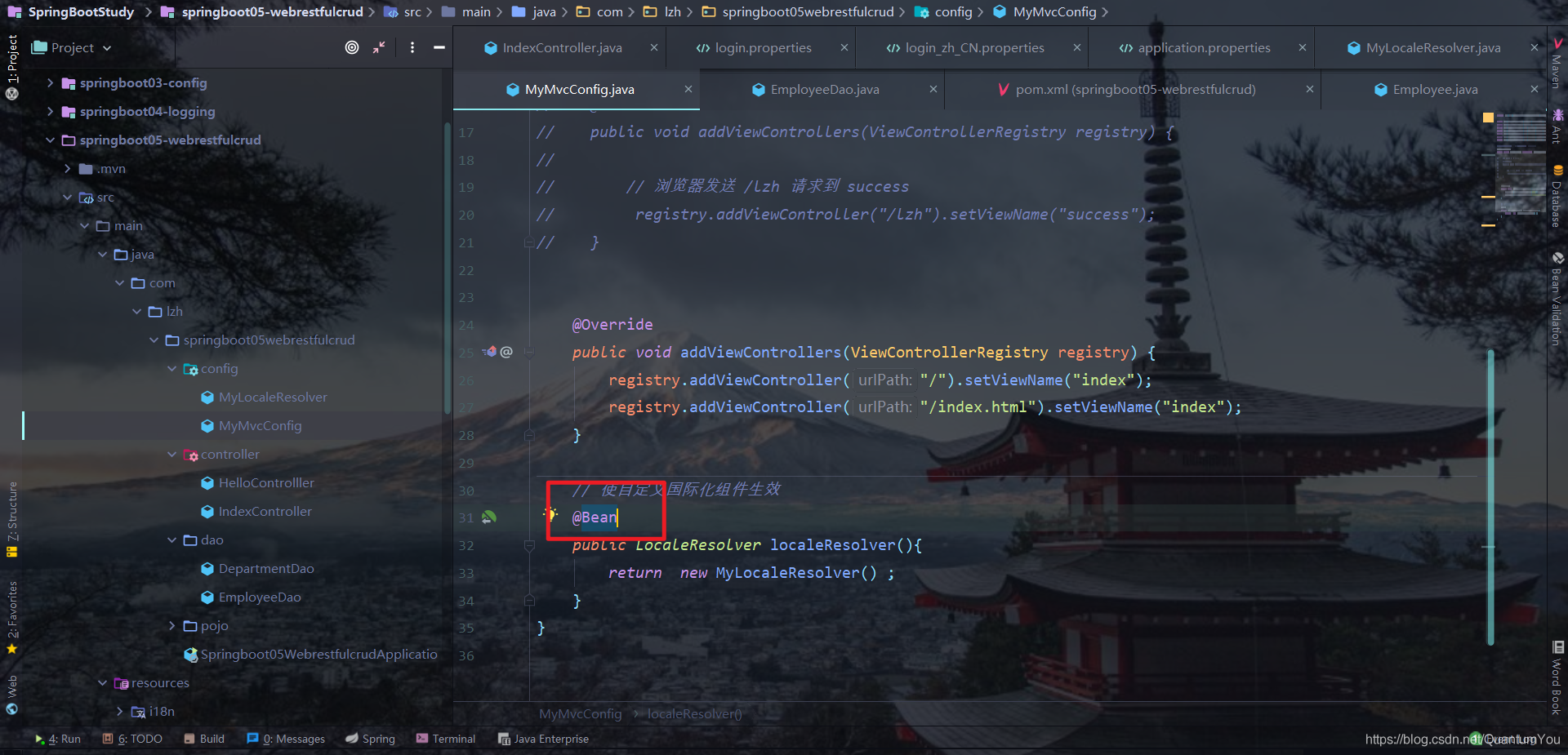
同时编写可视化操作

常见异常及其错误
①Thymeleaf版本错误
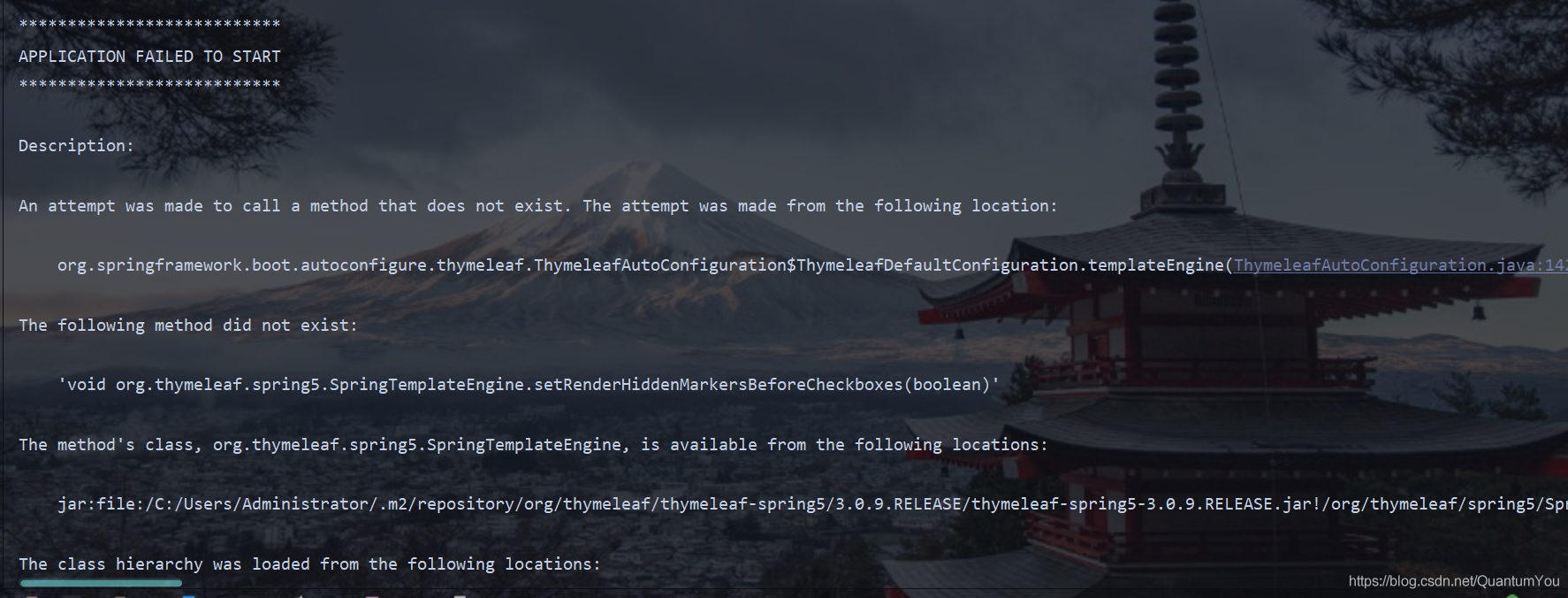
Action:
Correct the classpath of your application so that it contains a single, compatible version of org.thymeleaf.spring5.SpringTemplateEngine
原因:Thymeleaf版本错误,将其改为如下版本
SpringBoot 学集 (第四章)Web开发
标签:expr his eric mon ids odi attr bash boolean
原文地址:https://www.cnblogs.com/lzhCreate/p/13580451.html
下一篇:HTML5学习(12)表单元素
文章标题:SpringBoot 学集 (第四章)Web开发
文章链接:http://soscw.com/index.php/essay/69994.html